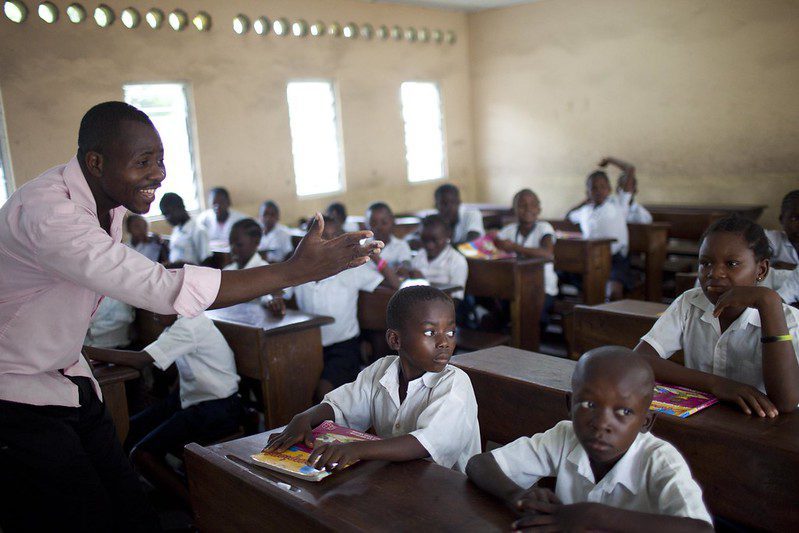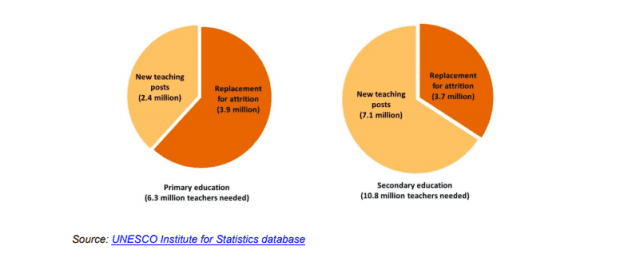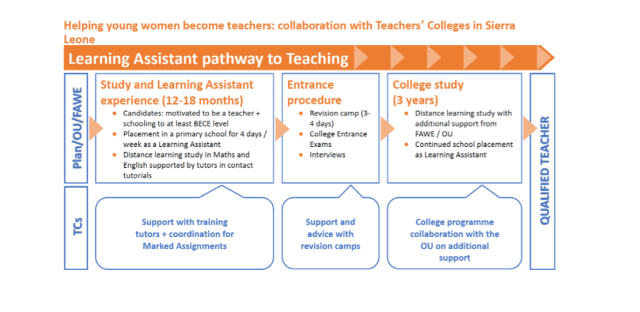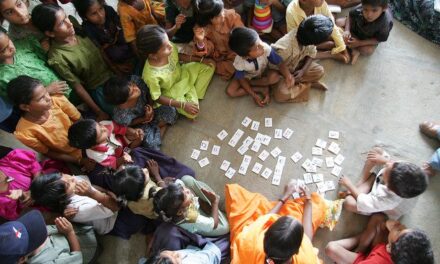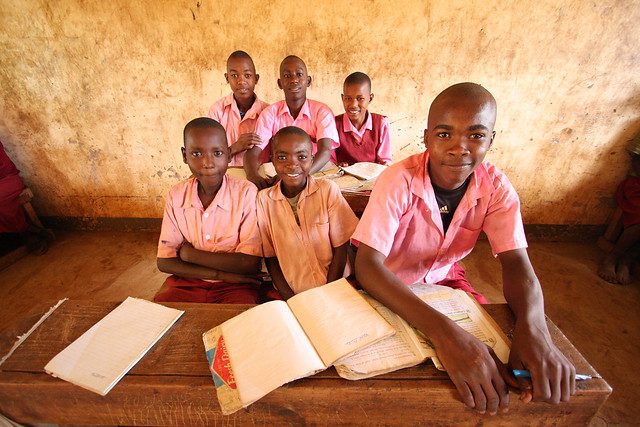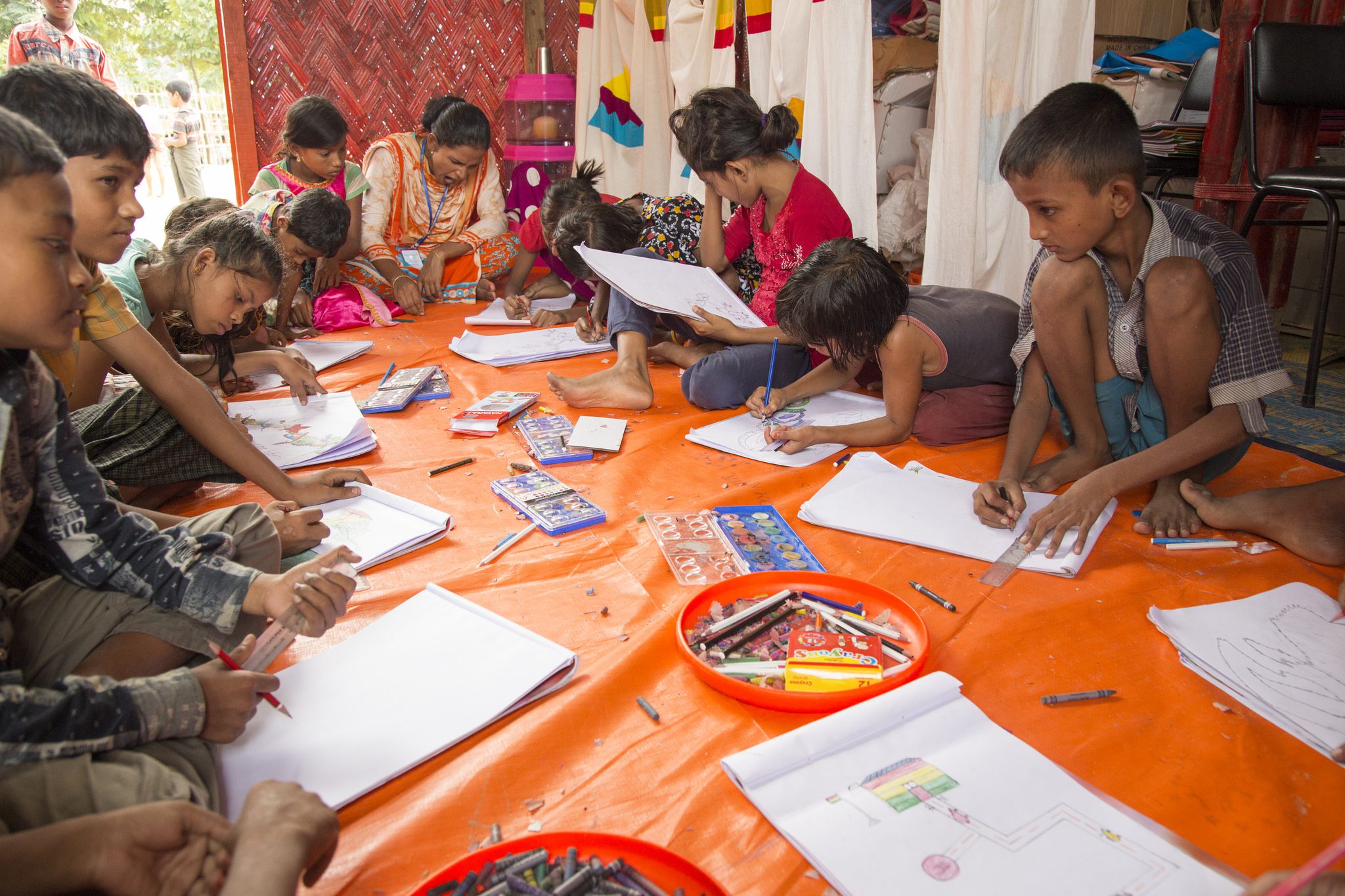This blog was written by Colin Bangay, Senior Education Adviser, DFID Sierra Leone and was originally published on the GEM Report blog on 31 October 2019.
Most would agree that good teachers make all the difference. As recent research attests, ‘the most effective interventions to improve student learning rely on teachers’. The imperative to bring the magnitude of teacher shortages to global attention is clear. However, there is a danger in aggregating projections to generate headlines such as ‘69 million teachers must be recruited by 2030 in order to meet SDG 4’. The UNESCO Institute for Statistics, which produced these projections in 2016, no longer undertakes such exercises, recognising they can be misleading. However, the figures retain currency, most recently being cited in the recent report released by the Education Commission, Transforming the Education Workforce. Ultimately, whether at global or national level, reducing teacher need to a single figure masks important nuances within the numbers.
Effective labour force planning is dependent on knowing not just how many teachers you need, but what kind and where they are needed. Globally, many countries struggle to produce enough secondary mathematics, science and language teachers; while across Africa there are the additional challenges of needing more female teachers and getting teachers to serve in rural areas. Without disaggregated evidence on the nature and not just the scale of teacher shortage, there is a danger that scarce funding will be spent on producing more teachers – but of the wrong kind.
Primary versus secondary education – not the same challenge
The task of providing teachers for primary (mainly replacement) and secondary schools (mainly filling new positions) is very different. The challenge at secondary is particularly acute. In order to deliver the next generation of teachers at the scale and speed required, we will need a fundamental rethink of the way teacher education is delivered, particularly given the limited number of secondary school graduates, their low learning achievement, and the intense workplace competition for strong secondary graduates.
Sub-Saharan Africa teacher needs in primary and secondary education
Teacher shortage and unemployment for mathematics and science teachers
In my experience, it is not uncommon for countries to be simultaneously experiencing both chronic teacher shortage and teacher unemployment. This is most obvious when looking at subject specific teachers, for instance in mathematics or science. A recent African study at primary level revealed that differences in teachers’ knowledge could explain up to 20% of variance in learning achievement. What then the impact on secondary? If teachers have little more grasp of complex mathematical concepts than their students, for instance, it is hard to imagine much learning taking place.
Great store has been put on the importance of mass secondary education in developing human capital and supporting sustainable development. Yet, across sub-Saharan Africa, we see chronic shortages of subject specific teachers and a reluctance of those with a mathematics and science background to enter the teaching profession. In response, teacher education colleges, with a financial imperative to fill their institutions, offer primary and generalist secondary courses, which often do not reflect national needs for mathematics and science teachers, and so the cycle continues.
Gender and geography
Having the right number of teachers doesn’t necessarily mean you have either the right type or that they are in the right places. In Sierra Leone where I work, we face a dual challenge – chronic underrepresentation of women in teaching (30% in primary and 7% in secondary) and not enough teachers in remote rural areas. In response, UKAID’s Girls’ Education Challenge has been supporting a promising programme that mentors female secondary school graduates from rural areas to become fully qualified teachers through a predominantly classroom practice model.
The programme delivers multiple benefits: raising the self-esteem and social status of participants in the community, providing role models for students, and ensuring that these remote rural schools are staffed. As the first cohort of young women graduates, the ‘acid test’ looms – is the national teacher recruitment process able to match qualified candidates with the remote rural schools where they are prepared to serve?
UKAID’s Girls Education Challenge Learning Assistance Programme
Ref: http://oro.open.ac.uk/49603/
Conclusion
The challenges and indeed many of the solutions have been expertly documented over the last 10 years, for instance the 2013/4 EFA Global Monitoring Report on teachers and Aiden Mulkeen’s seminal 2010 Teachers in Anglophone Africa report. Why, when we know so much about both the challenges and how to address them, have such modest gains been made? Yes, there is scope to harness the power of information technologies, such as matching algorithms, which could enable recruitment systems to deploy teachers to locations where they are prepared to work, for instance, but it is going take a lot more than this.
As Mulkeen set out, the difficulties in teacher provision are predictable and can be addressed through attention to four interconnected components – supply, distribution, quality and cost; the task ahead is less one of seeking to know more and more one of acting on what we know.

